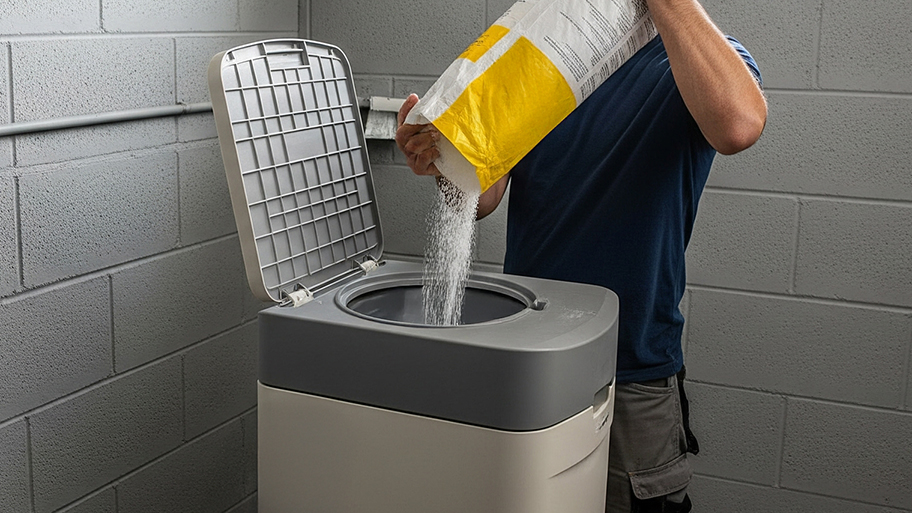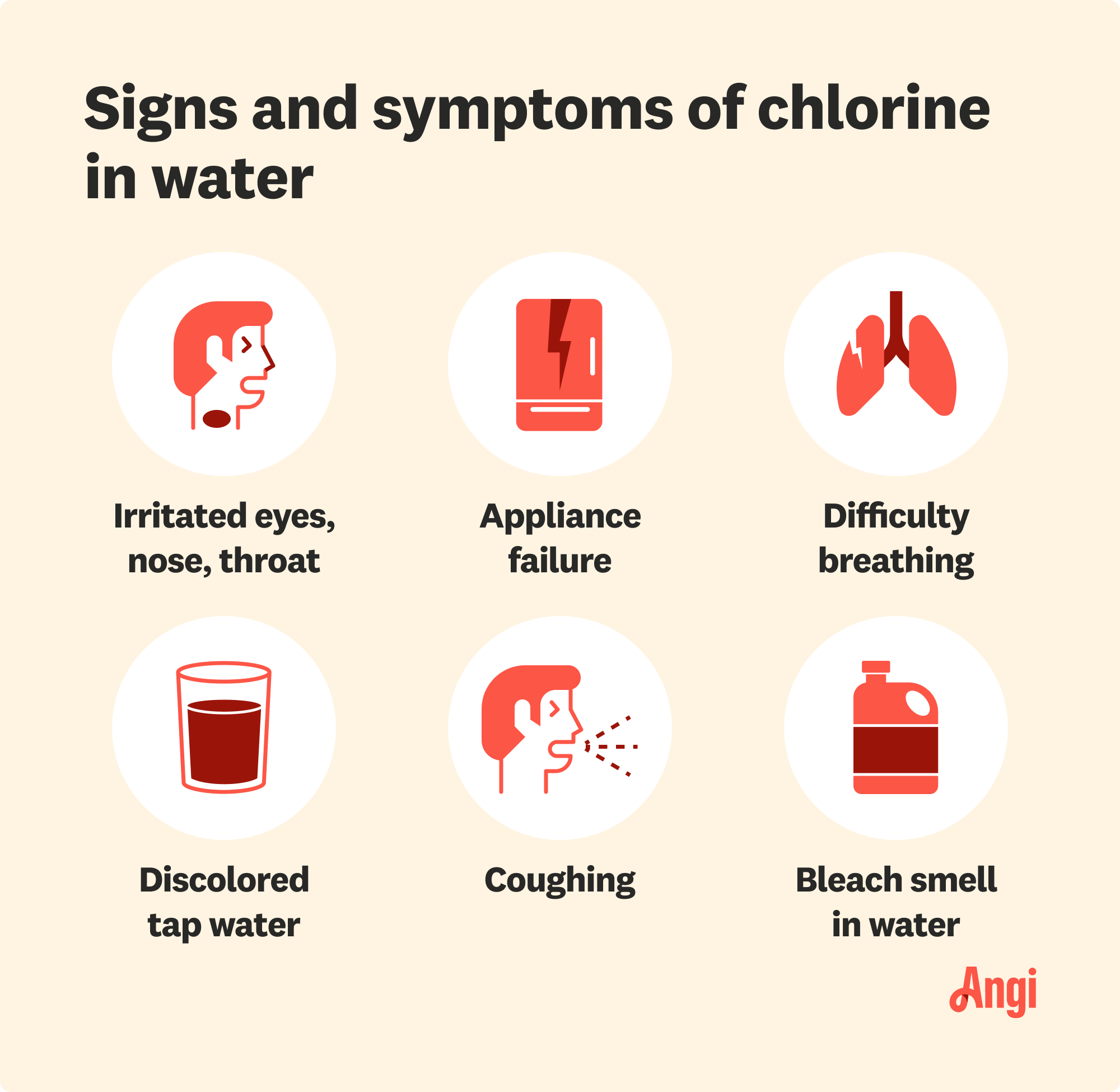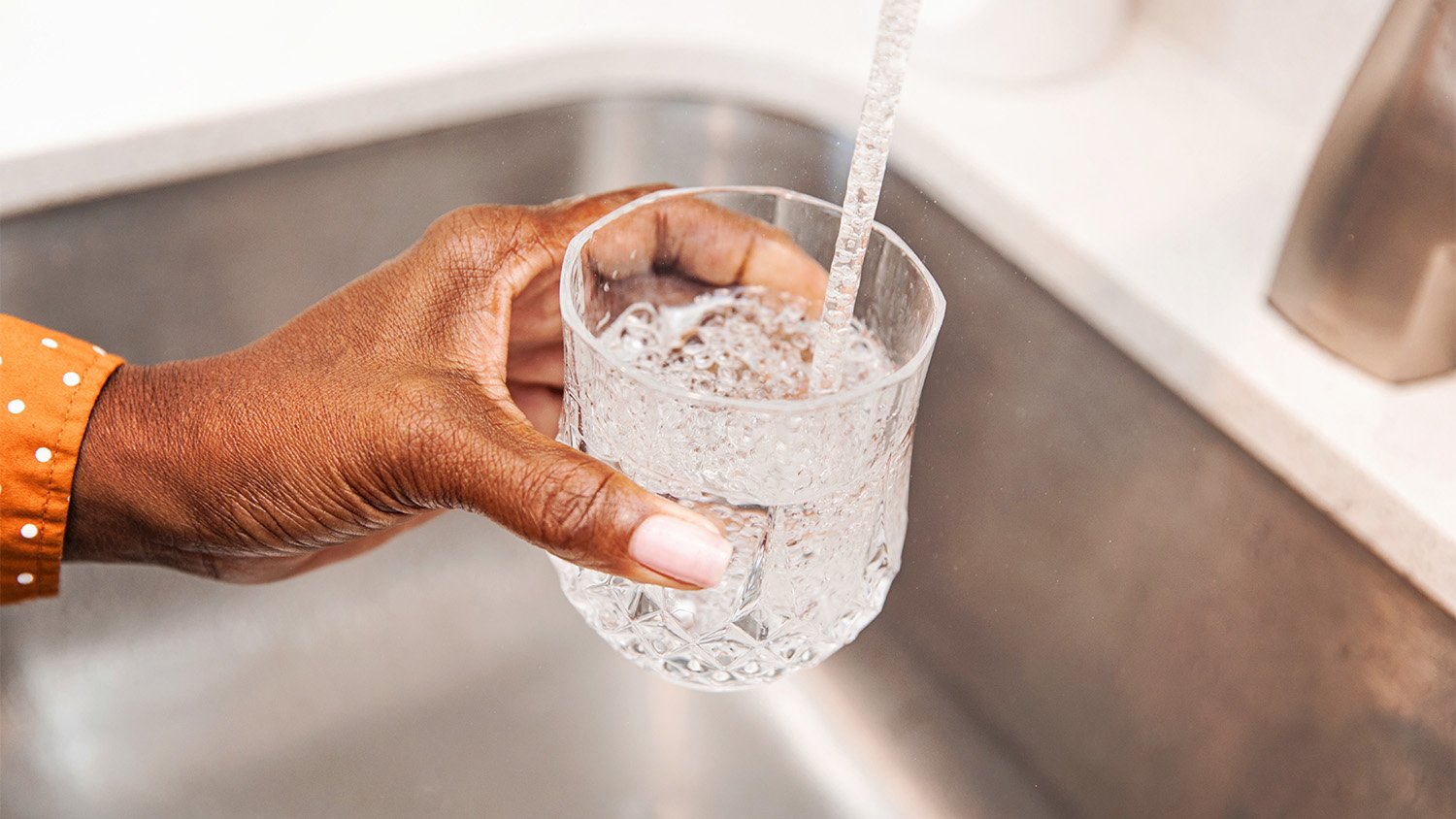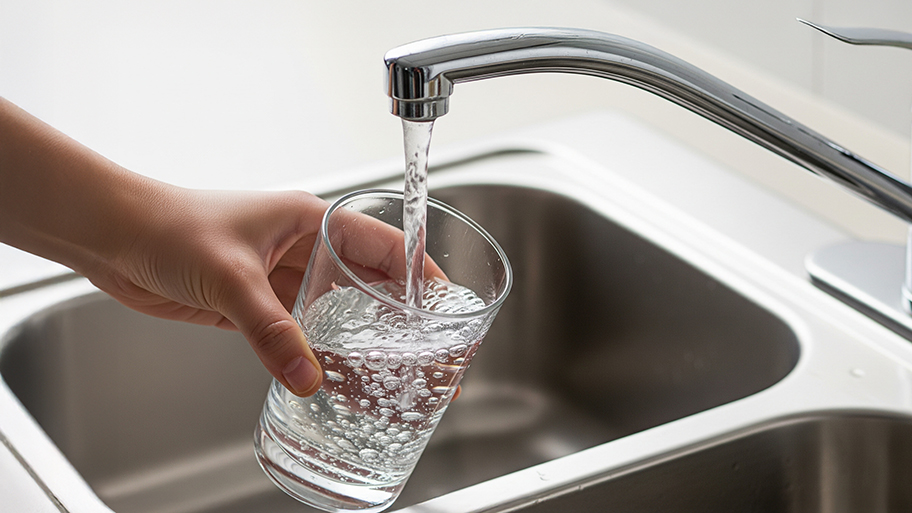
How much a water softener costs depends on your home’s size, and the system’s type and capacity. Our expert guide explores all the price factors.
High levels of chlorine could mean bad news for your health and your appliances


Drinking water shouldn’t contain more than 4 milligrams of chlorine per liter.
Signs of overly chlorinated tap water include dry skin, dull clothes, and lower-performing appliances.
Chlorine can cause both short-term and long-term health problems, like respiratory issues and cancer.
A water softener specialist can run water tests to confirm if your levels are too high. Many water filtration systems filter chlorine out of your tap water.
The symptoms of having too much chlorine in your water are unpleasant and can make you feel sick. They include eye, nose, and throat irritation, breathing problems, and skin redness. If you’re worried that some symptoms or signs you’re experiencing may point to overly chlorinated water, read on. Remember that calling a professional for an expert opinion is always a good idea, even if it turns out there’s nothing wrong with your water supply.
Recognizing early warning signs is important, but figuring out the right fix isn't always simple. Delaying professional help or attempting complex DIY repairs can lead to further damage and increased costs. With our network of local pros, you can hire a skilled professional to assess the issue and recommend the best solution.

Chlorine is useful for purifying a water supply, but too much of it can be bad for your health. The Centers for Disease Control and Prevention (CDC) states that chlorination is a useful disinfectant for killing parasites, bacteria, and viruses in drinking water, but chlorine levels in drinking water should never surpass 4 milligrams per liter.
Your local water authority should be conducting regular water tests to ensure the water supply stays within these limits, and you can request a water quality report if you suspect there’s too much chlorine. High amounts of chlorine in drinking water can cause uncomfortable physical symptoms and increased risk of health problems as well as damage to your home and plumbing.
Below are some of the symptoms you may experience from over-chlorinated tap water, according to the CDC:
Burns
Cough
Blisters
Dry skin
Dull hair
Brittle nails
Blurry vision
Skin redness
Chest tightness
Red, irritated eyes
Difficulty breathing
Sore throat and nose
Too much chlorine can also make other health problems worse, such as asthma, eczema, and food allergies. According to the CDC’s Agency for Toxic Substances and Disease Registry, chlorine produces a byproduct called bromodichloromethane (BDCM), which is considered a “probable human carcinogen” by the Environmental Protection Agency (EPA). Studies have shown tumor growth in lab animals exposed to BDCM from exceptionally high levels of chlorine.
However, water with more than the legal limit of 4 parts per million of chlorine is rarely found in the environment, and water with less than the legal limit of 4 parts per million of chlorine shouldn’t cause health problems.
In addition to physical symptoms, you may notice other signs around your home that there’s too much chlorine in your water.
A common sign of chlorine in tap water is a cloudy and yellow or brown color to the water.
You may notice a strong bleach, chlorine, or disinfectant-type smell coming from your water, and it may have a bitter, unpleasant taste.
Chlorine can fade or discolor clothing or cause spots and stains.
Rusty streaks in places where your tap water runs could also be a sign of too much chlorine in your water. Chlorine works as an oxidizing agent, which means it turns iron into rust.
Chlorine can dry out toilet flappers, rubber seals, and gaskets. This can result in damage to your appliances, including leaks and other expensive repairs. Look out for rubbery parts turning to mush or compromised water seals.
Your water heater, washing machine, dishwasher, and other water-using appliances will have a shorter life span if high amounts of chlorine are present in your water. Chlorine can corrode pipes, shortening the life span of your appliances.
If you’re experiencing physical symptoms and other signs you have too much chlorine in your water, it’s a good idea to have your water tested. In addition to requesting a report from your local water authority (if your water comes from a public supply), you can consult a local water softener specialist or water filtration expert to test your water and recommend a course of action, such as installing a whole-house water filtration system.
Because there is no government oversight of private wells, people relying on them are responsible for managing their own water quality to ensure it is safe (and enjoyable) to drink.
You can also test your water yourself with store-bought water testing kits. These come with test strips that let you test for chlorine as well as lead, copper, iron, and other contaminants. However, you’ll get more detailed information and precise results by hiring a water specialist.

If you have too much chlorine in your water, there are a few methods you can use to remove it.
Filtration system: You can install a whole-house filtration system as a long-term solution for removing chlorine. There are many types of water filters that can remove chlorine from your water.
Chemical neutralization: A potassium metabisulfite tablet dissolved in your tap water will neutralize chlorine.
Boiling: Boiling water for at least 15 minutes will remove chlorine from your tap water.
A whole-house filtration system is your best solution for removing chlorine from water. The cost of a whole-house water filtration system is $2,300 on average. The exact price depends on the type of system plus labor costs in your area. For example, a reverse osmosis water filtration system costs $2,200 on average but can go up to $4,800 for certain brands in areas with higher labor costs.
From average costs to expert advice, get all the answers you need to get your job done.

How much a water softener costs depends on your home’s size, and the system’s type and capacity. Our expert guide explores all the price factors.

On average, a reverse osmosis water filter costs around $2,200, but there are a few variables that impact the total price. Learn about them in this guide.

Your cost to install an under-sink water filter will depend on the type and size of system you choose and whether you need professional installation.

Learn the differences between hard versus soft water to see if you need to invest in a softener or if you can bask in the hard water.

Looking for tips on how to treat hard water? This guide explains the best options, including installing a water softener, adjusting your water heater, and more.

Removing a water softener for repair or replacement requires a few tools but a lot of skill. Learn how to remove a water softener like a pro with this guide.